MULTICEPS Cosson & Durand, 1862
Distribution : N Algeria, endemic to the mountains.
Description (according to 't Hart & Bleij in IHSP 2003) :
Perennial herbs or subshrubs, stems succulent, much branched, erect or ascending, to 15 cm tall.
Leaves alternate, densely imbricate, tufted, linear to linear-oblong or lanceolate, sessile with a small trilobate spur, obtuse, subterete, papillate, 4 – 10 x 1 – 2 mm, flowering branches simple, erect.
Inflorescences corymbiform with up to 12 flowers on 2 – 4 rarely forked cincinni, bracts 2 per flower.
Flowers 5- (to 7-)merous, sessile or subsessile, sepals broadly sessile, broadly linear to oblong, acute, ± 3 mm, petals basally free, broadly ovate to oblong-lanceolate, mucronate, yellow, ± 6 mm, anthers yellow.
Cytology : 2n = 58
Closely related to S. tuberosum from Tunisia and western Algeria. If grown together, the 2 species hybridize spontaneously (= S. x battandieri). It belongs to the comparium of Ser. Alpestria A. Berger ('tHart 1991).
Ray Stephenson (Sedum, Cultivated Stonecrops, 1994, p 192) :
Mostly seen as a miniature, indoor potted plant, this delightful species is in fact hardy in many warm, temperate areas. Often likened to a tiny Joshua tree, Sedum multiceps can attain a height of 15 cm (6 in) but it is sometimes decumbent. Many-branched stems are quite sturdy, topped with flat-topped tufts of papillose, linear leaves, and shaggy below with dead leaves. A few pale yellow flowers are produced each summer.
Habitat : Indigenous to Algeria but cultivated in many Mediterranean areas, Sedum multiceps has apparently escaped in Corsica and other islands. It is found from sea level to an elevation of 1500 m (4900 ft).
Main points of distinction : The habit of this species is very distinct, therefore it is unlike-ly to be confused with anything else. Kyphocarpic flowers are very similar to those of Sedum sexangulare, with pronounced mucronate petals and unspurred sepals, connate at the base. Bases of leaves are somewhat trilobate and leaves are papillate, especially above (Leaf shapes, fig. 4e).
Variation : Flowers can be many-partite: 7-partite is not uncommon. A rather strange, un-labeled little plant from Ron Evans's collection was passed on to me, and for several years I could not identify it. Tufts of leaves at stem tips, with dead leaves below, and bare stems in lower sections remind me very much of Sedum multiceps, but in this instance, stems are weaker and decumbent, and leaves are not grouped in flat-topped tufts. Papillation of leaf tips is less pronounced but still visible. Stems are very fine and short, and soon arch; therefore, the general appearance of plants is quite unlike that of S. multiceps. I discovered the identity of the oddity in the works of Maire (1977) to be S. x battandieri.
Sedum x battandieri is described as a natural hybrid of S. tuberosum Cosson & Letourneux, a species no longer in cultivation, and S. multiceps. Sedum tuberosum is a caudiciform stonecrop with a caudex like a potato from which non-perennial stems carry loosely imbricate, papillose leaves. Despite its odd mode of growth, it "seems to be closely allied to S. multiceps," according to Fröderström (1932, 70). The hybrid has characteristics of both parents. Unfortunately, in the hybrid, the caudex is missing. Leaves are wider than those of S. multiceps, and stems are perennial but weak. Flowers are golden yellow, and, in or out of flower, this is a pretty plant for a tiny pot.
Horticulture : Sedum x battandieri makes a super pseudobonsai plant for a ceramic container. It can become brittle and, if handled roughly, can disintegrate, providing much propagation material. Sedum multiceps is charming on a windowsill, superb in a succulent collection, and delightful if grown outside. Plants broken by frosts are easily rerooted.
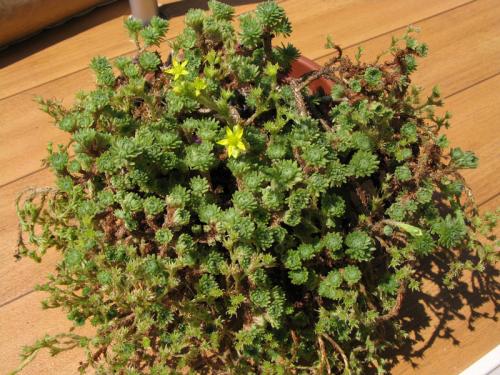
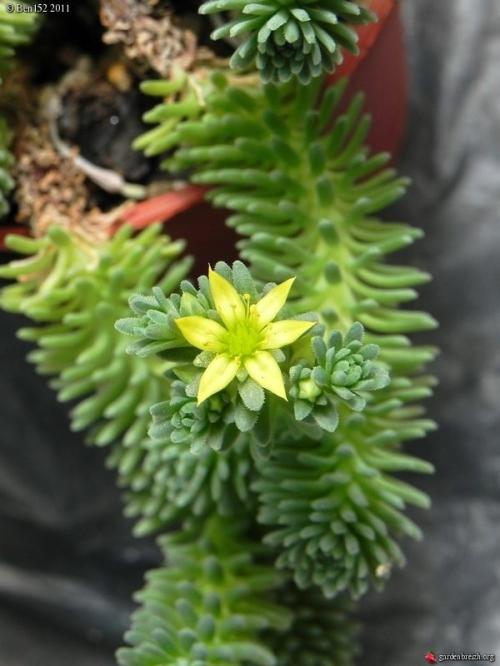
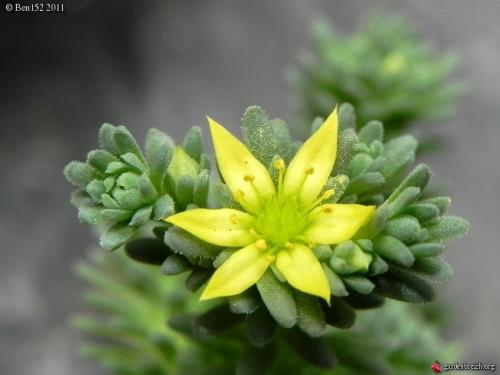
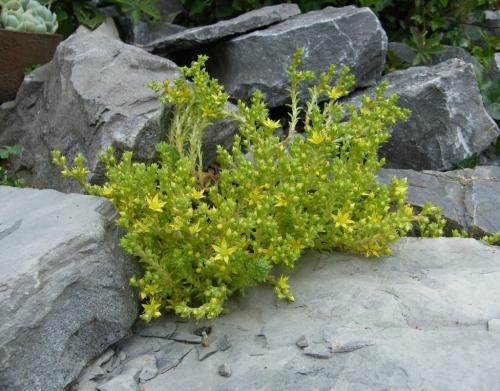
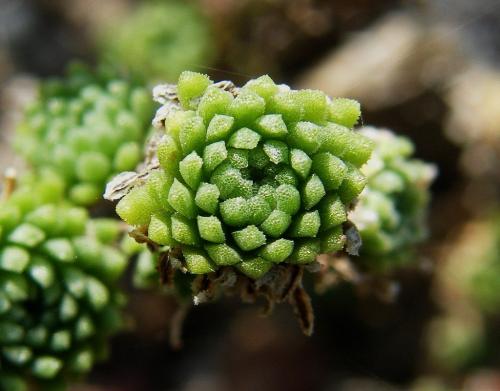
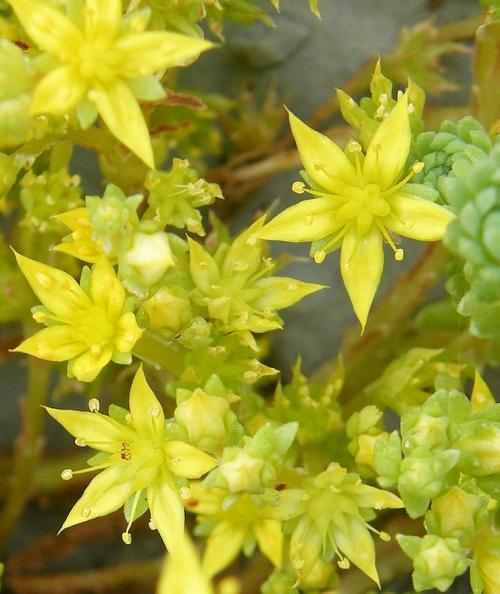
Photos Emmanuelle Aubé
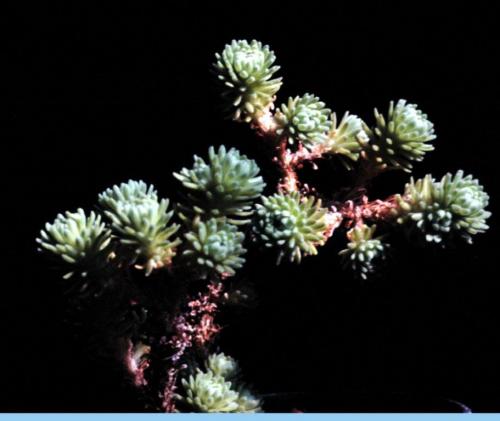
Photo Ray Stephenson